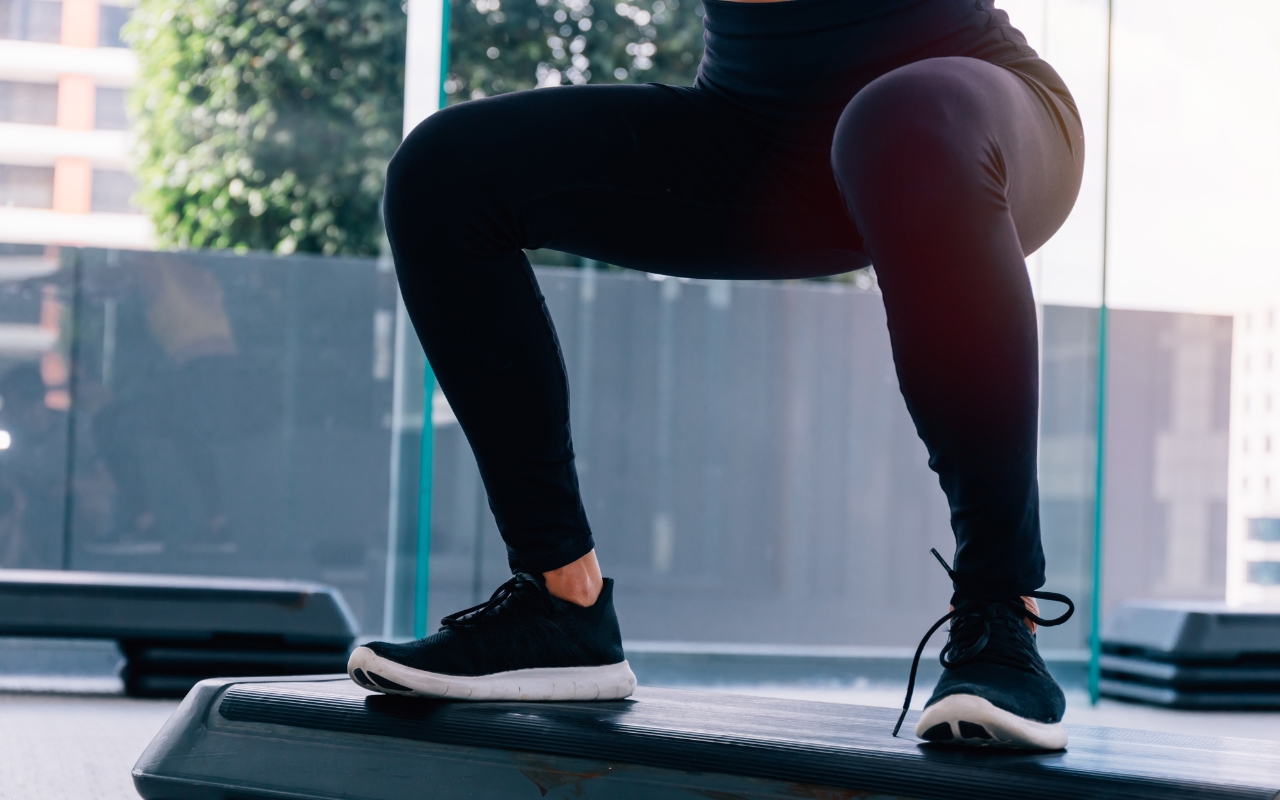Mastering the squat is a foundational goal in strength training and fitness. This compound movement is lauded for building strength, enhancing athletic performance, and improving overall body mechanics. However, achieving optimal squat depth and proper form can be challenging, requiring careful attention to technique, mobility, and mental conditioning. This article will comprehensively explore the nuances of squatting, offering practical advice to enhance your performance and ensure safe execution.
The Importance of Proper Squat Technique
Squats are more than just a lower body exercise; they engage multiple muscle groups, including the quadriceps, hamstrings, glutes, spinal erectors, and even the core. Executing squats with proper form is crucial not only for maximizing the benefits but also for preventing injuries. As highlighted on StrongLifts, adequate squat form involves maintaining a balanced bar path over your mid-foot, ensuring your knees and hips move synchronously, and keeping a stable core throughout the movement.
A key element of proper technique is the depth of the squat. For optimal muscle activation and joint health, it is recommended that the tops of your thighs go below parallel to the ground. This level of depth ensures that your glutes and hamstrings are adequately engaged, promoting balanced development in the posterior chain.
Adjusting Your Squat Positioning
Before delving into specific mobility drills or advanced techniques, it's essential to understand that squat form can vary significantly from person to person. This variation is influenced by limb length, hip socket anatomy, and overall flexibility. Therefore, experimenting with different foot positions, stance widths, and toe angles is critical to finding the best squat setup for your body.
For instance, some athletes may benefit from a wider stance with toes pointed slightly outward, which can help accommodate limited hip mobility. Conversely, individuals with greater hip flexibility might find a narrower stance more effective. The goal is to achieve a position that allows you to maintain an upright torso, balance the weight over your mid-foot, and reach adequate depth comfortably.
Assessing and Improving Mobility
Mobility restrictions are a common barrier to achieving proper squat depth. The ankles, hips, and thoracic spine are key areas to focus on. Tightness in any of these regions can limit your range of motion, leading to compensatory movements that jeopardize form and increase injury risk.
Ankle Mobility
Ankle mobility is often overlooked but plays a pivotal role in squatting. Limited dorsiflexion (the ability to flex your toes upward toward your shin) can prevent your knees from moving forward over your toes, resulting in an excessive forward lean of the torso. To address this, incorporate ankle mobility exercises such as calf stretches, ankle circles, and dynamic movements like lunges, focusing on pushing the knee forward over the toes.
Hip Mobility
Hip flexibility is crucial for reaching depth in the squat. Tight hip flexors and adductors can impede your ability to lower your hips below parallel. Incorporating hip-opening stretches such as the pigeon pose, hip flexor stretches, and deep squats without weight can be beneficial. Additionally, foam rolling the hip area can help release tight muscles and improve overall mobility.
Thoracic Spine Mobility
A restricted thoracic spine (upper back) can cause a forward-leaning posture during squats, placing undue stress on the lower back. Practice thoracic extensions over a foam roller seated thoracic rotations, and cat-cow stretches to enhance thoracic mobility. Ensuring your thoracic spine can extend adequately will help you maintain an upright posture during the squat.
The Mental Aspect: Overcoming Fear and Building Confidence
Fear is a significant psychological barrier affecting squat performance, particularly when lifting heavy weights. The apprehension of getting stuck at the bottom of a squat or losing balance can hinder your ability to commit to full depth. Building confidence in your squat requires both mental conditioning and practical strategies.
Use Safety Equipment
Employing safety measures such as a power rack with safety pins or having a reliable spotter can alleviate fear. These tools provide a safety net, allowing you to push your limits without worrying about failing a rep and getting trapped under the bar.
Progressive Overload and Visualization
Gradual progression in weight and consistent practice help build mental resilience. Starting with lighter weights and progressively increasing the load as your strength and confidence improve is a sensible approach. Visualization techniques, where you mentally rehearse successful squats, can boost confidence and prepare your mind for the lift.
Advanced Techniques to Enhance Squat Performance
Incorporating advanced techniques can elevate your performance once you have mastered the basics of squat form and improve your mobility. These methods benefit seasoned lifters looking to break plateaus and achieve more significant gains.
High-Bar vs. Low-Bar Squats
Understanding the difference between high-bar and low-bar squats can help you choose the variation that aligns with your goals. High-bar squats, where the bar is placed higher on the traps, emphasize an upright torso and greater quadriceps activation. Olympic weightlifters commonly use This variation to mimic the catch position in the clean and jerk.
Low-bar squats, with the bar positioned lower on the back, engage more of the posterior chain, including the glutes and hamstrings. This setup allows lifters to handle heavier weights due to their mechanical advantage and is favored by powerlifters. Both variations have merits; incorporating both into your training regimen can provide a well-rounded approach to lower body strength.
Box Squats
Box squats involve squatting down to a box set at a specific height, which helps reinforce proper depth and control. This variation can benefit lifters who struggle with consistency in reaching parallel. Box squats also teach explosive power from a dead-stop position, enhancing overall strength and speed.
Pause Squats
Pause squats require you to hold the bottom position for a few seconds before ascending. This technique increases time under tension, promoting muscle growth and improving stability in the bottom position. It also helps eliminate the “bounce” out of the squat, ensuring you can maintain control and strength throughout the entire movement.
Common Squat Mistakes and How to Fix Them
Even seasoned lifters can fall prey to common squat mistakes that compromise form and effectiveness. Identifying and correcting these errors is crucial for long-term progress and injury prevention.
Knee Valgus
One of the most prevalent issues is knee valgus, where the knees cave inward during the squat. This compromise in alignment can lead to knee pain and injury. To correct knee valgus, strengthen the hip abductors and external rotators through exercises like clamshells, lateral band walks, and single-leg glute bridges. Additionally, cue yourself to push the knees outward during the squat to maintain alignment with the toes.
Excessive Forward Lean
An excessive forward lean shifts the load onto the lower back rather than the legs, increasing the risk of back injuries. Ensuring adequate thoracic mobility, strengthening the core, and choosing the appropriate bar position (high bar for a more upright torso) can mitigate this issue. Additionally, checking your ankle mobility and using weightlifting shoes with an elevated heel can help maintain an upright posture.
Heels Lifting Off the Ground
If your heels lift off the ground during the squat, it indicates a lack of ankle mobility or improper weight distribution. Focus on improving ankle dorsiflexion through targeted stretches and mobility drills. Redistribute your weight by ensuring the bar stays over your mid-foot throughout the movement, keeping your entire foot grounded.
Lower Back Rounding
Rounding of the lower back, or “butt wink,” at the bottom of the squat can place undue stress on the lumbar spine. Improving hip and hamstring flexibility and practicing bracing techniques to keep the core engaged can reduce the tendency for lower back rounding. Adjusting your squat depth to a range that maintains a neutral spine is crucial.
Incorporating Squats into Your Training Routine
Integrating squats into your training regimen requires a well-thought-out approach to ensure balanced development and adequate recovery. Whether you are a novice or an advanced lifter, structuring your squat workouts to align with your overall goals is essential.
Frequency and Volume
The frequency of squatting depends on your training experience and recovery capacity. Beginners may benefit from squatting two to three times weekly, focusing on form and building a strength foundation. Intermediate and advanced lifters can vary their frequency based on their specific goals, incorporating different squat variations and intensities.
Volume, or the number of sets and reps, should be tailored to your needs and goals. Higher volume with moderate weights is effective for hypertrophy, while lower volume with heavier weights targets strength development. Balancing intensity and volume is critical to preventing overtraining and ensuring continuous progress.
Training Splits
Integrating squats into various training splits can provide a balanced approach to overall strength and muscle development. Common splits include:
- Full-Body Splits: Squats can be performed at the beginning of each workout to prioritize this compound movement.
- Upper/Lower Splits: Designate lower body days for squatting and other leg exercises, allowing for focused intensity.
- Push/Pull/Legs Splits: Dedicate daily to squats and complementary leg movements, ensuring adequate recovery between sessions.
Periodization
Implementing periodization, or the strategic variation of training variables over time, can optimize your squat performance and prevent plateaus. Periodization models can include linear progression, where weights gradually increase over weeks, or undulating progression, where volume and intensity vary within each training cycle.
Periodization enhances neuromuscular adaptations by systematically manipulating training variables, promotes continuous progress, and reduces the risk of overtraining and injury.
Conclusion: The Journey to Squat Mastery
Mastering the squat is a journey that requires dedication, consistent practice, and a willingness to address weaknesses and refine techniques. Understanding the importance of proper form, adjusting your positioning, improving mobility, and incorporating advanced techniques can enhance your squat performance and achieve greater strength and muscular development.
Remember that progress in squats, as in any aspect of fitness, is a marathon, not a sprint. Celebrate small victories, stay patient, and remain committed to continuous improvement. With time, effort, and the right approach, you will conquer the squat and unlock its full potential in your training regimen.
For more detailed advice on improving your squat depth and form, consider exploring the comprehensive resources available at The Barbell Physio and Muscle & Fitness. These articles provide additional insights and drills tailored to enhancing your squatting abilities and overcoming common challenges.










